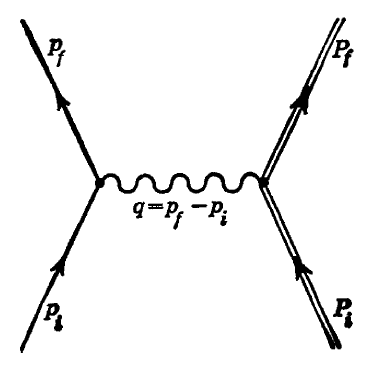From the perspective of this blog, the most important advance provided by the Relativistic Transactional Interpretation (RTI, [1]) of quantum physics is the replacement of the ad hoc Born Rule with a physical process and freeing from its ties to measurement. This process involves an interplay between the quantum substrate (QS) and the space-time layer of empirical events, as discussed previously. Not only are there empirical events in space-time (constructed from past events) but also non-empirical QS events outside space-time. As shown in the previous post, the quantum state changes from that obtained through unitary propagation to a state associated with the projection on to the space-time event due to conditioning on that projection. So, there is an observable stochastic process in space-time and a hidden (not observable) QS stochastic process governed by the same transition probabilities. This interplay between the QS and space-time events needs further discussion.
Ruth Kastner explains in detail [1] how RTI quantum theory developed from the classical Wheeler-Feynman Absorber Theory of Radiation [2, 3]. In chapter 5 she reaches the technical core of the book that builds on the quantum adaptation of absorber theory by Davies [4,5]. The historical progression will not be our concern here but the formal structure of the argument. In the book two further references are provided and they help in presenting the structure. They are a joint paper with John Cramer [6] and a paper explicitly on the measurement problem [7].
It is a theme of this blog that events in the micro-domain cannot be restricted to measurements so the argument will focus on absorption events with measurements as a special case. A helpful list of RTI terminology has been provided [7] and it will be adapted here to begin the structured argument. In a further adaptation I will seek to avoid mention of waves because pictures of wave propagation in empirical space have been a major source of confusion.
- micro-emitter: an excited quantum object with the propensity to release of quantum of energy (\(\hbar \omega\))
- micro-absorber: a quantum object with a propensity to be excited from a lower energy state to a higher one on receiving offered the quantum energy
- macro-emitter: a collection of \(N_E : N_E \gg1 \) micro-emitters
- macro-absorber: a collection of \(N_A : N_A \gg 1\) micro-absorbers
- emission: a micro-emitter generates an offer \(|\omega>\) of energy \(\hbar \omega\)
- absorber response: a micro-absorber generates a confirmation (\(<\omega , k|\))
- corresponding to the component of the offer received by it
- instantiating a non-unitary transition
- absorption: an actualised transaction in which conserved quantities (e.g. energy) are transferred from the emitter to a particular micro-absorber, resulting in excitation of the latter. This is irreversible (non-unitary) and random.
The photon
- The potential possibilities that the sub-system could manifest are encapsulated within a complex (represented mathematically by the \(\sigma\)-complex)
- In the first step, the QS environment interacts with the sub-systems to realise sub-sets of statistical potentiality. This can be thought of as a step to propensity with statistical weightings realised through conditioning
- In the second step the possibilities of the statistical potentiality are sampled by the other entities in the QS, and this can, but need not, lead to a space-time event.
References
- Ruth E. Kastner, The Transactional Interpretation of Quantum Mechanics - A Relativistic Treatment, Cambridge University Press, second edition 2022
- John A. Wheeler, Richard P. Feynman, (1945). Interaction with the Absorber as the Mechanism of Radiation. Reviews of Modern Physics. 17 (2–3): 157–181.
- John A. Wheeler, Richard P. Feynman, (1949). "Classical Electrodynamics in Terms of Direct Interparticle Action". Reviews of Modern Physics. 21 (3): 425–433.
- Paul C. W. Davies, (1971) Extension of Wheeler-Feynman Quantum Theory to the Relativistic Domain I. Scattering Processes, J. Phys. A: Gen. Phys. 4, 836.
- Paul C. W. Davies, (1972) Extension of Wheeler-Feynman Quantum Theory to the Relativistic Domain II. Emission Processes, J. Phys. A: Gen. Phys. 5, 1025-1036.
- Ruth E. Kastner, and John G. Cramer, (2018). Quantifying absorption in the Transactional Interpretation. International Journal of Quantum Foundations 4:3, 210–22.
- Ruth E. Kastner, (2018) On the status of the measurement problem: recalling the relativistic transactional interpretation. International Journal of Quantum Foundations 4:1, 128–41.
- James D. Bjorken and Sidney D. Drell, (1964) Relativistic Quantum Mechanics, McGraw-Hill Book Company


